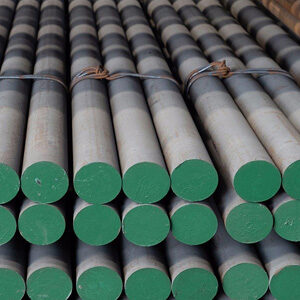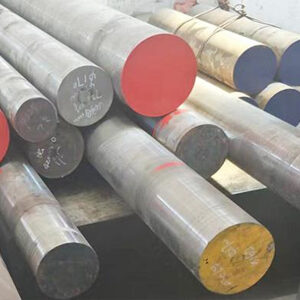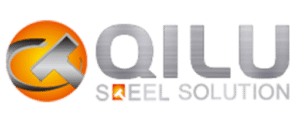Welcome to My Blog! 🌟
Before we dive into the content, I’d love for you to join me on my social media platforms. It’s where I share more insights, engage with our vibrant community, and post regular updates. Here’s how you can stay connected:
📘 Facebook: Connect with me on Facebook
Now, let’s embark on this journey together. I hope you find the content here insightful, engaging, and most importantly, valuable. Let’s explore, learn, and grow together! 🚀
Table of Contents
Introduction

In the modern manufacturing and tooling industries, material selection is crucial for performance and durability. One material that has gained significant popularity is cpm d2 steel. This high-performance steel variant is widely favored for its unique properties that cater to demanding applications. In this article, we will explore the top 7 benefits of using cpm d2 steel today and why it remains a top choice for various industries.
Understanding the basics of cpm d2 steel is essential before diving into its benefits. CPM stands for Crucible Particle Metallurgy, a process that enhances the steel’s microstructure and overall properties. D2 steel is a high-carbon, high-chromium tool steel known for excellent wear resistance and toughness. Combining these two yields a product with superior qualities.
NO 1. Exceptional Wear Resistance of cpm d2 steel
One of the most highly regarded advantages of this specialized tool steel is its outstanding wear resistance. Thanks to the unique Crucible Particle Metallurgy process, the material exhibits a uniform distribution of hard carbides throughout its microstructure. This characteristic significantly boosts its ability to withstand abrasion and surface wear over extended use. Such durability makes it an excellent choice for manufacturing cutting tools, dies, and molds that are exposed to continuous friction and mechanical impact.
Industries like automotive manufacturing, woodworking, and metal stamping heavily depend on materials that can endure harsh working conditions without losing effectiveness. Tools fabricated from this alloy retain their sharpness and functional efficiency for longer periods, which translates to reduced downtime and lower costs related to frequent tool replacement or maintenance.
NO 2. Superior Toughness and Impact Strength
Another major benefit is the remarkable toughness this steel offers. Despite its high carbon content, it achieves an impressive balance between hardness and impact resistance. The refined grain structure resulting from the advanced metallurgy process enhances the steel’s capacity to resist cracking, chipping, or breaking under significant stress.
This toughness makes it highly suitable for applications subject to repetitive shocks or vibrations, such as components used in heavy machinery or construction equipment. Using this material in such contexts improves durability and operational reliability, which ultimately lowers the chances of sudden mechanical failures and increases workplace safety.
NO 3. Enhanced Corrosion Resistance Compared to Traditional D2 Steel
Traditional D2 tool steel is widely used for its hardness and wear resistance, but one of its known limitations is susceptibility to corrosion, especially when exposed to humid conditions or chemically aggressive environments. This vulnerability can lead to rust formation and oxidation over time, which compromises the longevity and performance of tools and components made from it.
The improved version, produced through advanced powder metallurgy methods, features a much finer and more uniform microstructure along with precisely balanced alloying elements. These enhancements significantly boost its ability to resist corrosive agents. This means that in environments where moisture, salt, acids, or other harsh substances are present, this steel maintains its integrity much longer than traditional D2.
Industries such as food processing, chemical manufacturing, and marine engineering especially benefit from this property. In these sectors, equipment and tooling are routinely exposed to moisture and corrosive substances, so using this more resistant steel helps extend the operational lifespan of parts. Additionally, it reduces the frequency of maintenance and replacements, ultimately lowering overall costs and downtime. This improved corrosion resistance therefore represents a vital advantage in demanding applications where durability is key.
NO 4. Ease of Machining and Heat Treatment

Machining high-carbon tool steels can often be difficult due to their hardness and toughness. Nevertheless, this steel variant offers noticeably better machinability compared to conventional versions, mainly because the CPM process produces a more consistent and fine-grained microstructure.
Moreover, heat treatment of this material is more predictable and controllable, allowing manufacturers to reliably achieve specific hardness and toughness levels according to their needs. This capability not only facilitates better customization but also contributes to more efficient and cost-effective production processes.
NO 5. Versatility in Industrial Applications
The combination of wear resistance, toughness, and corrosion protection makes this tool steel extremely versatile across a broad spectrum of industrial uses. It is commonly employed in manufacturing:
- Cutting implements such as knives and blades
- Punches and dies used in metal forming processes
- Industrial knives applied in paper, leather, and plastics production
- Components for heavy machinery that require exceptional strength and durability
Thanks to this versatility, manufacturers can standardize on this one material for various projects, reducing the complexity and cost associated with stocking multiple different steel types.
Table: Comparison of cpm d2 steel vs. Traditional D2 Steel Properties
| Property | cpm d2 steel | Traditional D2 steel | Benefit |
|---|---|---|---|
| Wear Resistance | Very High | High | Longer tool life |
| Toughness | Improved | Moderate | Better impact resistance |
| Corrosion Resistance | Moderate to High | Low to Moderate | Less maintenance |
| Machinability | Better | Average | Easier processing |
| Heat Treatment Consistency | High | Variable | Predictable hardness |
| Cost | Higher | Lower | Higher upfront cost |
| Application Versatility | Wide | Moderate | Suitable for various tasks |
This table summarizes the advantages that make cpm d2 steel a premium choice despite its relatively higher cost compared to traditional D2 steel.
NO 6. Cost Efficiency Over the Long Term
Although the upfront investment for this advanced tool steel may be higher compared to some traditional alternatives, its superior durability and extended service life provide significant cost savings in the long run. Because tools and components made from this material exhibit excellent resistance to wear, corrosion, and mechanical stress, they require far fewer replacements or repairs over their operational lifetime.
This reduction in replacement frequency directly lowers downtime and labor costs associated with maintenance. In industries where continuous production and minimal interruptions are critical—such as automotive manufacturing, metalworking, and heavy machinery—investing in high-quality materials like this steel can dramatically improve overall cost efficiency. By reducing unexpected breakdowns and prolonging tool life, companies save money not only on raw materials but also on lost productivity and repair expenses. Therefore, despite the initial price premium, the total cost of ownership becomes far more economical over time.
NO 7. Consistency and Quality Assurance

A major advantage of the Crucible Particle Metallurgy process lies in the highly uniform and defect-free microstructure it produces. This refined manufacturing technique virtually eliminates weak spots, inclusions, or other imperfections commonly found in conventionally produced tool steels.
Such consistency guarantees that every batch of this steel meets stringent quality control standards, which is especially critical when producing precision tools or components that require reliable performance under demanding conditions. The homogeneity of the material ensures predictable behavior during machining, heat treatment, and in-service use, reducing variability and the risk of unexpected failures.
This dependable quality builds confidence among manufacturers and end users alike, as they can trust the steel to perform consistently at high levels across all applications. For businesses that rely on precision and durability—whether in aerospace, automotive, or heavy equipment manufacturing—this assurance of quality is invaluable, ensuring operational reliability and reducing costly recalls or rework.
Conclusion
In summary, cpm d2 steel offers a combination of exceptional wear resistance, toughness, improved corrosion resistance, and processing advantages that make it an outstanding material for many industrial uses. While the upfront cost is higher, the long-term benefits and versatility justify the investment.
Choosing cpm d2 steel means opting for durability, reliability, and consistent performance. For businesses aiming to enhance their production efficiency and product quality, cpm d2 steel is undoubtedly a smart choice in today’s competitive market.
FAQ
What industries benefit the most from using cpm d2 steel?
Industries such as automotive, aerospace, woodworking, food processing, and heavy machinery benefit greatly due to the steel’s wear resistance and toughness.
How does cpm d2 steel compare to other tool steels?
cpm d2 steel offers better uniformity and enhanced toughness compared to traditional D2 steel, along with improved corrosion resistance.
Is cpm d2 steel difficult to machine?
Compared to traditional high-carbon steels, cpm d2 steel is easier to machine due to its consistent microstructure.
Can cpm d2 steel be heat-treated multiple times?
Yes, the steel responds well to heat treatment, allowing for adjustments in hardness and toughness as needed.
Does the higher cost of cpm d2 steel affect project budgets significantly?
While the initial cost is higher, the steel’s durability and reduced downtime often result in cost savings over the long term.

